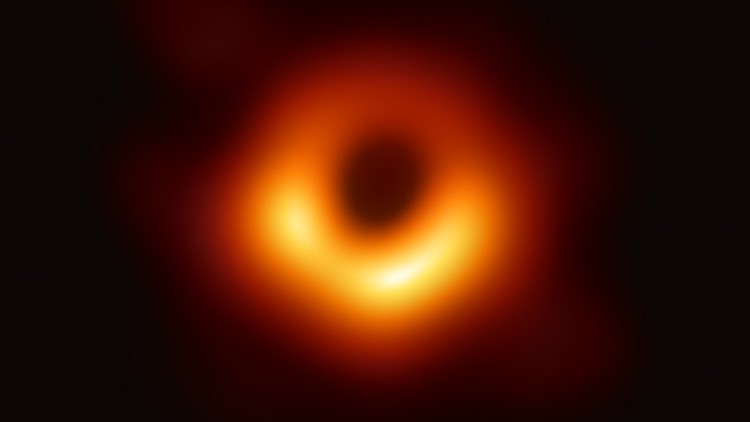
To teach students basic concepts and principles of engineering physics, relate them to laboratory experiments and
What you will learn
☑ ENGINEERING PHYSICS
☑ As per Savitribai Phule Pune University (SPPU), Pune, India 2019 curriculum
☑ Course Code: 107002
☑ First Year of Engineering
Description
Course Objectives:
To teach students basic concepts and principles of physics, relate them to laboratory experiments and their applications.
Prerequisite Courses, if any:
Fundamentals of: optics, interference, diffraction polarization, wave-particle duality, semiconductors and magnetism.
Course Outcomes:
On completion of the course, the learner will be able to–
CO1: Develop an understanding of interference, diffraction, and polarization; connect it to few engineering applications.
CO2: Learn the basics of lasers and optical fibers and their use in some applications.
CO3: Understand concepts and principles in quantum mechanics. Relate them to some applications.
CO4: Understand the theory of semiconductors and their applications in some semiconductor devices.
CO5: Summarize the basics of magnetism and superconductivity. Explore a few of their technological applications.
CO6: Comprehend use of concepts of physics for Non-Destructive Testing. Learn some properties of nanomaterials and their application.
Unit I Wave Optics
Interference
- Introduction to electromagnetic waves and electromagnetic spectrum
- Interference in a thin film of uniform thickness (with derivation)
- Interference in thin-film wedge shape (qualitative)
- Applications of interference: testing optical flatness, anti-reflection coating Diffraction
- Diffraction of light
- Diffraction at a single slit, conditions for principal maxima and minima, the diffraction pattern
- A diffraction grating, conditions for principal maxima and minima starting from resultant amplitude equations, diffraction pattern.
- Rayleigh’s criterion for resolution, resolving power of telescope and grating
- Polarization
- Polarization of light, Malus law
- Double refraction, Huygen’s theory of double refraction
- Applications of polarization: LCD
Unit II Laser and Optic Fibre Laser
- Basics of laser and its mechanism, characteristics of laser
- Semiconductor laser: Single Hetro-junction laser
- Gas laser: CO2 laser
- Applications of lasers: Holography, IT, industrial, medical, Optic Fiber
- Introduction, parameters: Acceptance Angle, Acceptance Cone, Numerical Aperture
- Types of optical fiber- step index and graded index
- Attenuation and reasons for losses in optic fibers (qualitative)
- Communication system: basic building blocks
- Advantages of optical fiber communication over conventional methods.
Unit III Quantum Mechanics
- De-Broglie hypothesis
- Concept of phase velocity and group velocity (qualitative)
- Heisenberg Uncertainty Principle
- Wave-function and its physical significance
- Schrodinger’s equations: time-independent and time-dependent
- Application of Schrodinger’s time-independent wave equation
- Particle enclosed in infinitely deep potential well (Particle in RigidBox)
- Particle in Finite potential well (Particle in Non Rigid box) (qualitative)
- Tunneling effect, Tunneling effect examples (principle only): Alpha Decay,
- Scanning Tunneling Microscope, Tunnel diode
- Introduction to quantum computing
Unit IV Semiconductor Physics
- Free electron theory (Qualitative) solids
- Opening of bandgap due to internal electron diffraction due to lattice Band theory of solids.
- The effective mass of electron Density of states
- Fermi Dirac distribution function
- The conductivity of conductors and semiconductors
- Position of Fermi level in intrinsic and extrinsic semiconductors (with derivations
based on carrier concentration) - Working of PN junction on the basis of the band diagram
- Expression for barrier potential (derivation)
- Ideal diode equation
- Applications of PN junction diode: Solar cell (basic principle with band diagram) IV characteristics and Parameters, ways of improving the efficiency of solar cell
- Hall effect: Derivation for Hall voltage, Hall coefficient, applications of Hall effect
Unit V Magnetism and Superconductivity Magnetism
- Magnetism
- Origin of magnetism
- Classification of magnetism on the basis of permeability (qualitative)
- Applications of magnetic devices: transformer cores, magnetic storage, magneto-optical recording.
- Superconductivity
- Introduction to superconductivity; Properties of superconductors: zero electrical resistance, critical magnetic field, persistent current, Meissner effect
- Type I and Type II superconductors
- Low and high-temperature superconductors (introduction and qualitative)
- AC/DC Josephson effect; SQUID: basic construction and principle of working; Applications of SQUID
- Applications of superconductors
Unit VI Non-Destructive Testing and Nanotechnology
- Non Destructive Testing
- Classification of Non-destructive testing methods
- Principles of physics in Non-destructive Testing
- Advantages of Non-destructive testing methods
- Acoustic Emission Testing
- Ultrasonic (thickness measurement, flaw detection)
- Radiography testing Nanotechnology
- Introduction to nanotechnology
- Quantum confinement and surface to volume ratio
- Properties of nanoparticles: optical, electrical, mechanical
- Applications of nanoparticles: Medical (targeted drug delivery), electronics, space and defense, automobile.
English
Language
Content
Introduction
Introduction to Course
Engineering Physics Syllabus
Unit 1: Wave Optics
Electromagnetic Waves
Interference (Part 1)
Interference (Part 2)
Diffraction (Part 1)
Diffraction (Part 2)
Diffraction (Part 3)
Polarization (Part 1)
Polarization (Part 2)
Polarization (Part 3)
Problem Solving on Unit 1: Wave Optics
Unit 2: LASER & Optic Fibre
LASER (Part 1)
LASER (Part 2)
Optic Fibre (Part 1)
Optic Fibre (Part 2)
Problem Solving on Unit 2
Unit 3: Wave Mechanics
Wave Mechanics (Part 1)
Wave Mechanics (Part 2)
Wave Mechanics (Part 3)
Wave Mechanics (Part 4)
Wave Mechanics (Part 5)
Wave Mechanics (Part 6)
Wave Mechanics (Part 7)
Wave Mechanics (Part 8)
Wave Mechanics (Part 9)
Unit 4: Semiconductor Physics
Semiconductor Physics (Part 1)
Semiconductor Physics (Part 2)
Semiconductor Physics (Part 3)
Semiconductor Physics (Part 4)
Semiconductor Physics (Part 5)
Semiconductor Physics (Part 6)
Semiconductor Physics (Part 7)
Semiconductor Physics (Part 8)
Unit 5: Magnetism & Superconductivity
Magnetism (Part 1)
Magnetism (Part 2)
Magnetism (Part 3)
Magnetism (Part 4)
Superconductivity (Part 1)
Superconductivity (Part 2)
Superconductivity (Part 3)
Superconductivity (Part 4)
Unit 6: Non Destructive Testing and Introduction to Nanotechnology
NDT (Part 1)
NDT (Part 2)
NDT (Part 3)
Nanotechnology (Part 1)
Nanotechnology (Part 2)
Nanotechnology (Part 3)
Nanotechnology (Part 4)
Nanotechnology (Part 5)
Nanotechnology (Part 6)